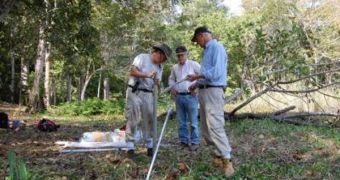According to a new investigation, it would appear that the Mayans were in the habit of practicing forest conservation, archaeological pieces of evidence point out. They also conserved the land and water on their territories, and historians now believe that the time when they abandoned these practices spelled nothing but troubles for the ancient culture. A paper on the theme is published in the July issue of the Journal of Archaeological Science.
Experts at the University of Cincinnati reveal that the management practiced by the past civilization should teach us a valuable lesson about the importance of protecting our environment. “From our research we have learned that the Maya were deliberately conserving forest resources. Their deliberate conservation practices can be observed in the wood they used for construction and this observation is reinforced by the pollen record,” University of Cincinnati Professor of Biological Sciences David Lentz, who is also the Cincinnati Center for Field Studies executive director, explains.
“Forty years ago the emphasis was on what king built what palace, who slew whom and who is portrayed on what stelae. It's all about the rulers and their exploits. They didn't look at the economy, agricultural practices, forest management or how the people and the culture functioned,” he adds. The UC team is the first one to have been allowed to investigate at the Tikal site core in northern Guatemala over the last four decades. It concludes that the Mayans had good forest-preservation practices set in place that allowed them to exploit the forest in a sustainable manner.
“They were not allowed to cut down what we're calling the 'sacred groves.' Then that changed during the Late Classic period with Jasaw Chan K'awiil – one of the greatest figures of prehistory. The Tikal Maya had been beaten up and had fallen to second-rate status prior to his ascendancy. Jasaw Chan K'awiil led an army to the heartland of a competing city, Calakmul, captured their ruler, bound him, brought him back and sacrificed him – and it totally reversed their fortunes in a very dramatic way,” the expert concludes.

 14 DAY TRIAL //
14 DAY TRIAL //